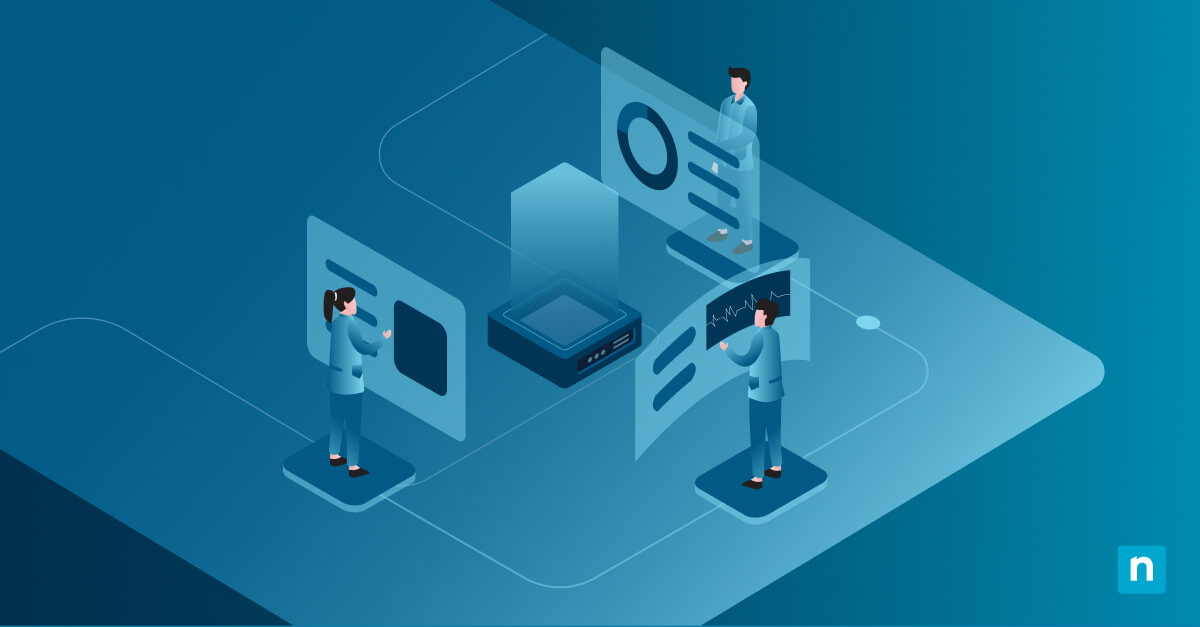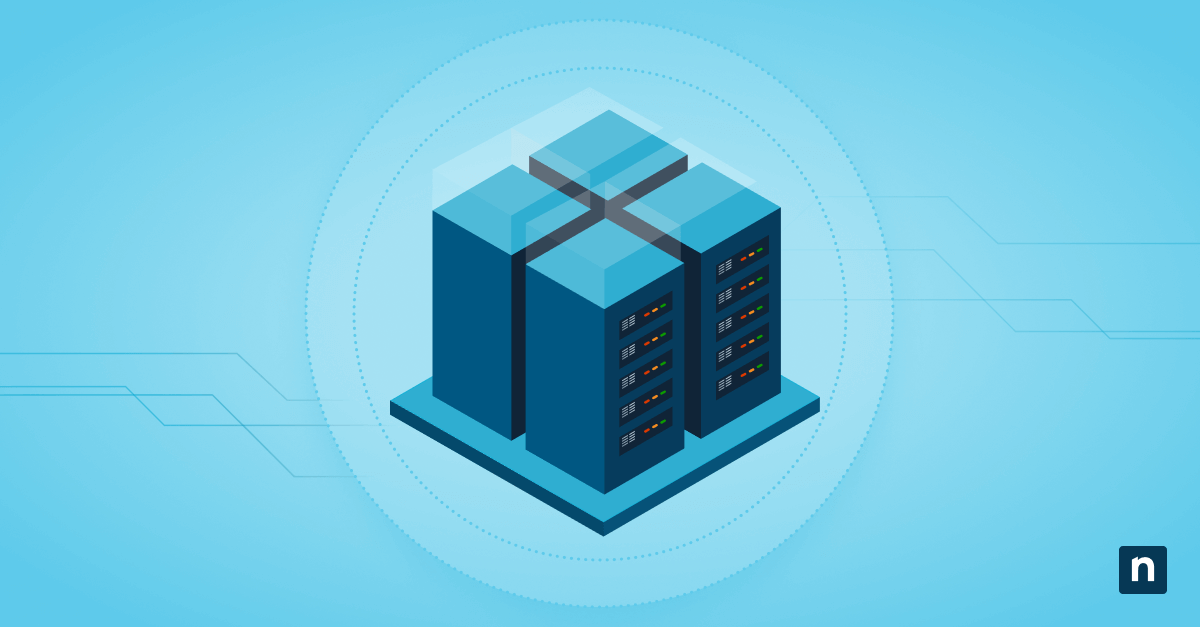Key Points
- Connect RMM and PSA platforms using built-in integrations to automatically map alert severity to ticket priorities and synchronize comment updates between systems.
- Implement custom alert-to-ticket workflows via webhooks or API calls to generate and route tickets for environments where native RMM-PSA connectors do not exist.
- Configure precise mapping rules to route tickets to the correct service boards and enable settings that automatically close tickets when the underlying RMM alert is resolved.
- Enrich incident tickets with real-time diagnostic data and artifacts by triggering PowerShell or CMD scripts immediately upon alert generation to streamline troubleshooting.
- Standardize client and asset metadata through Group Policy Objects and Registry keys to ensure accurate association of RMM alerts with specific customer contexts and locations.
One of the quickest and most effective ways to streamline IT incident response is to integrate your RMM (Remote Monitoring and Management) software and PSA (Professional Services Automation) platform.
Both have varying functions. RMM software tracks system health, performance, and security, while PSA ticketing platforms handle service tickets, technician assignments, and SLA compliance. When set up correctly, these tools can turn alerts into tickets automatically, streamlining your workflows and helping your team respond to issues faster.
Integrating your RMM platform with your PSA ticketing system requires you to perform only a few straightforward steps. This guide outlines how to accomplish this. You’ll learn how to automate alert-to-ticket conversion, sync real-time status updates, and enhance incident data by using scripting and policy tools.
How to integrate RMM with PSA ticketing systems for seamless incident response
📌 Prerequisites:
- You will need an active RMM platform such as NinjaOne, Datto RMM, or N-able.
- Your environment needs a supported PSA or ticketing platform like ConnectWise, Autotask, ServiceNow, or Zendesk.
- These methods require administrator-level API (Application Programming Interface) credentials for PSA and RMM platforms.
- Access to automation tools such as PowerShell, Registry Editor, or Group Policy will be necessary for scripting and client-side configuration.
- You should have permission to test API calls or webhook payloads between platforms.
Method 1: Connect RMM and PSA ticketing platforms via built-in integrations
Many modern RMM platforms support direct, built-in integration with PSA and ticketing systems. This method is often the quickest way to link alerts and tickets, and you won’t need to use custom scripts or third-party tools to do it.
📌 Use Cases:
- Best for MSPs who are looking for a fast way to integrate their RMM and PSA.
- Ideal for automatically creating tickets from high-priority alerts.
- Helpful in assigning alerts to specific technician groups or service boards.
- This method will help you keep your tickets and alert statuses in sync.
📌 Prerequisites:
- An RMM platform that supports native PSA integration, such as NinjaOne, Datto RMM, or N-able.
- You will need a compatible PSA or ticketing system like ConnectWise, Autotask, ServiceNow, or Zendesk.
- Ensure you have administrator-level API credentials for your RMM and PSA software.
- You must have the ability to access and configure integration settings within the RMM platform
- Network access to test authentication, routing, and webhook communication
Here’s how to connect your RMM to your PSA system using built-in tools:
⚠️ Note: The steps and user interface may vary depending on the RMM.
- First, open your RMM platform and proceed to the Admin Settings section.
- After this, pick your PSA or ticketing system from the list.
- Enter the required API credentials or tokens.
- Configure mapping rules for alerts. Here, you can set parameters such as:
- Map alert severity to PSA ticket priorities.
- Define routing rules based on alert types or device groups
- Assign alerts to specific technician queues or service boards.
- Enable sync options:
- Sync ticket comments with RMM notes or alert updates
- Automatically close tickets when the original alert has been resolved.
- To verify if the integration is working, you can try doing the following:
- Create a test alert in your RMM and check if a ticket is automatically generated in the PSA.
- Update the alert in the RMM and confirm if the ticket reflects the change.
- Close the alert and ensure the PSA ticket updates accordingly.
Method 2: Create custom alert-to-ticket workflows with webhooks or API
If your RMM or PSA platform doesn’t support built-in connectors, you can use webhooks or direct API calls to create custom integrations. This will allow you to send alerts from the RMM to your PSA system, generate tickets, and trigger actions based on specific alert types.
📌 Use Cases:
- Best for environments where no native RMM–PSA integration exists.
- Useful for advanced MSPs who need complete control over ticket creation and routing.
- Ideal for triggering automation from specific alert conditions using custom scripts.
📌 Prerequisites:
- RMM platform with alert policies that support custom scripts or webhook calls.
- PSA system with a documented REST API (such as ConnectWise, ServiceNow).
- Valid API credentials or bearer tokens with ticket creation permissions.
- Access to automation scripting tools like PowerShell or curl.
- Network access to test endpoint availability, authentication, and payload delivery.
Here’s an example of a PowerShell snippet that creates a ticket in ConnectWise via API:
$uri = "https://psa.example.com/v4_6_release/apis/3.0/service/tickets"$headers = @{"Authorization" = "Bearer YOURTOKEN""Content-Type" = "application/json"}$body = @{summary = "Disk usage critical on Client-PC01"company = @{ id=123 }board = @{ id=5 }status = @{ id=1 }priority = 2} | ConvertTo-Json
Invoke-RestMethod -Uri $uri -Method Post -Headers $headers -Body $body
Security Best Practice: Handling API Credentials Never hardcode your API keys or tokens directly into scripts, as they can be exposed in logs. Instead:
- Use Script Variables: Store credentials in your RMM’s “Secret Store” or “Global Variables” section (e.g., $Ninja_PSA_Key).
- Use Encrypted Parameters: Pass credentials as encrypted parameters at runtime.
- Least Privilege: Ensure the API token has permissions only to create tickets, not to delete assets or read financial data.
Method 3: Enrich tickets with live diagnostic data via PowerShell
Apart from making tickets, you can also use PowerShell to pull diagnostic data and attach it to the ticket. This way, technicians can have immediate context, enabling them to assess and resolve the issue faster without requiring a lengthy investigation.
📌 Use Cases:
- This method will add context to alert-based tickets.
- It will improve technicians’ response time by providing up-front data.
📌 Prerequisites:
- Your RMM platform must support custom scripts or diagnostic tasks.
- PowerShell 5.1 or later has to be installed on managed endpoints.
- You will need API integration with the PSA system to pass log data.
- Scripting permissions and administrative access are required on the target machines.
Here is an example of a PowerShell snippet that pulls the top 5 memory-consuming processes on a CPU and prepares them for logging:
# Correctly capture current CPU usage percentage
$cpuUsage = Get-Counter "\Process(*)\% Processor Time" -ErrorAction SilentlyContinue$topProcesses = $cpuUsage.CounterSamples |Where-Object { $_.CookedValue -gt 0 } |Sort-Object CookedValue -Descending |Select-Object -First 5
$log = $topProcesses | Format-Table -AutoSize | Out-String
Note: The previous `Get-Process` command sorts by total CPU time since launch. Using `Get-Counter` provides the real-time CPU load percentage that technicians actually need.
You can utilize this output in a webhook or API body or attach it as a diagnostic note within your RMM.
Method 4: Using CMD scripts to generate incident artifacts
Command Prompt scripts can still be used in automated incident detection. They can be used to create log entries for which your RMM is on the lookout. Doing so will trigger alerts and ticket creation.
📌 Use Cases:
- This is useful in environments where PowerShell is unavailable.
- Best for monitoring non-critical events or service states at regular intervals.
- It can streamline workflows by generating context-specific logs.
📌 Prerequisites:
- Your RMM platform must be capable of monitoring file paths or custom log files.
- The Windows endpoints in your environment should support command scripts and scheduled tasks.
- You will need permissions to write logs locally and configure task execution.
Here’s a sample CMD command that writes a timestamped message to a local log file:
echo %DATE% %TIME% Antivirus service not running >> C:\Logs\incident.log
The file will act as a signal for your RMM software. When the script writes to incident.log, the RMM detects the change and triggers an alert or ticket based on the update.
In addition, you can automate this check by running a scheduled task that runs every hour:
schtasks /create /tn "CheckAV" /tr "check_av.bat" /sc hourly
This script checks the status of the antivirus. It’s also important to note that RMM solutions like NinjaOne can monitor endpoint status and send alerts automatically without having to use scripts.
Method 5: Standardize client configuration with registry and GPO
Using the Windows Registry and Group Policy, technicians can standardize how endpoints store metadata like customer name, site, or asset tag. This will make it easier to map alerts to the right client or location when responding to incidents.
📌 Use Cases:
- This procedure can help map RMM alerts to specific clients, locations, or assets.
- You can use this to enrich ticket payloads automatically with endpoint context.
- This method can simplify automation and make targeting more reliable and scalable.
📌 Prerequisites:
- Endpoints need to be part of a domain.
- To accomplish this, you must have elevated access to tweak registry settings.
- The Group Policy Management Console (GPMC) or Group Policy Editor needs to be available on the system.
- Your RMM platform needs to support running scripts or storing custom metadata.
Here’s an example of a registry path you can configure to store client-specific metadata:
[HKEY_LOCAL_MACHINE\SOFTWARE\MSP\AssetTag]
"Customer"="ClientABC"
"Site"="HQ"
You can use this data to automatically enrich RMM alerts and PSA tickets. This ensures that each ticket shows the correct client, site, or asset, making it easier to route issues to the correct queue and speeding up resolution.
You can then use this PowerShell command to retrieve the information stored here and add it to alert payloads or ticket descriptions:
(Get-ItemProperty "HKLM:\SOFTWARE\MSP\AssetTag").Customer
You can then automate this across all endpoints via Group Policy Preferences. Here’s how:
- Open the Group Policy Management Console.
- Create or edit a Group Policy Object (GPO).
- Right-click your domain or organizational unit (OU).
- Click Create GPO in this domain, and link it here.
- Name it aptly like Client Metadata Keys.
- Head to Computer Configuration > Preferences > Windows Settings > Registry.
- Right-click New, then select Registry Item.
- Set the following:
- Action: Create or Update (pick update if you are planning to modify it later)
- Hive: HKEY_LOCAL_MACHINE
- Key Path: SOFTWARE\MSP\AssetTag
- Value name: Customer
- Value type: REG_SZ
- Value data: ClientABC (replace this with an actual customer name or one that can help identify your client)
- Ensure the GPO is linked to the OU that contains the new computers or devices being onboarded.
⚠️ Things to look out for
| Risks | Potential Consequences | Reversals |
| Incorrect API credentials | Integration fails, and tickets may not be synced or created. | Double-check tokens, re-authenticate, and test with known-good credentials |
| Missing or misconfigured registry keys | Ticket payloads may lack client context or may not route alerts correctly. | Reapply registry keys via GPO or script. |
| Scripts fail silently on endpoints | The tickets will not include diagnostic data, and alerts will go out without context. | Add logging/output scripts, then test execution manually in RMM before automating. |
Additional considerations when integrating RMM with PSA ticketing
Prevent duplicate tickets
To reduce clutter and fend off messy workflows, multiple tickets must not issue the same alerts. To prevent this, configure alert throttling in your RMM software.
Make sure tickets are routed correctly
Ensure your alert types are mapped to your PSA’s correct technician queues, service boards, or categories. Tickets in the wrong queue might delay response and resolution.
Clear alerts
Be sure that resolving a ticket in your PSA will automatically clear or close the original alert in the RMM. That way, clutter can be avoided in the RMM, and the chances of having to do work twice will be eliminated. If it’s not set up, you might still see it in your dashboard like it were never handled.
Log and verify backup failures
Be sure to include backup job failures in your alert rules. Doing so will guarantee that the risk is reduced during the recovery scenario and that a technician will take action before it’s too late.
Troubleshooting issues related to integrating RMM with PSA ticketing systems
Tickets have not been created
In such cases, confirm that the API token hasn’t expired. You can also check alert filters in your RMM and configure the alert condition. Plus, ensure that your firewall and other security software aren’t blocking your API’s outbound calls.
Incorrect ticket fields
In such cases, validate the JSON payload or webhook format. The field names, like the status ID, board name, and priority code, should match what your PSA expects.
Event loop issues
In some cases, both your RMM and PSA may sync ticket status back and forth, and one may keep reopening the other in a loop. You can avoid this by picking one system to control a ticket’s final status, usually the PSA, and turning off status syncing from the other side.
Missing diagnostics in tickets
Ensure that scripts (CMD and PowerShell) are run with admin rights and capture output. Nothing will be added to the ticket if they don’t return data. Try testing the script manually before linking it to an alert.
NinjaOne PSA integrations and services
NinjaOne gives MSPs the means to automate incident response right from the start, from alert to resolution, due to its PSA software integrations and flexible scripting options.
| NinjaOne service | What it is | How does it help with PSA ticketing? |
| Native PSA connectors | Built-in integrations for platforms like ConnectWise, Autotask, and HaloPSA | Automatically creates and syncs tickets without manual configuration or scripting |
| Scripted alert triggers | PowerShell scripts triggered by specific alerts | Adds diagnostics or calls external APIs to create detailed, actionable tickets |
| Custom fields | Ticket metadata pulled from NinjaOne device inventory | Populates tickets with useful contexts like hostname, customer, or site name |
| Event-driven tickets | Alert rules tied to thresholds, service failures, or missed backups | Converts critical system events into tickets automatically for fast triage |
| Auto-remediation | Implement automation policies that let you run repair scripts when alerts are triggered. | Resolves issues immediately while still opening a ticket for tracking or follow-up |
| Dashboard sync | Unified view of active tickets, SLAs, and alert sources | Gives technicians full visibility into incident status without switching platforms |
Integrate your RMM and PSA for an efficient incident response workflow
Integrating your RMM software and PSA ticketing helps transform your incident response from a reactive undertaking into an efficient and straightforward process. Thanks to enriched tickets and automated alerts, your technicians will handle issues seamlessly. In turn, this will make your organization’s environment more secure and endpoint users more productive.
Related topics:
- Essential NinjaOne Ticketing Automations to Get You Started
- 10 IT Help Desk Best Practices for IT Professionals
- Ticket Management: How to Reduce Helpdesk Ticket Response Times
- What Is Incident Response?
- What is RMM? A Modern Definition Plus Evaluation Criteria for 2025
Quick-Start Guide
NinjaOne offers robust integration capabilities for RMM (Remote Monitoring and Management) with PSA (Professional Services Automation) and Ticketing Systems. Here are the key details:
- PSA Integrations:
- NinjaOne supports integrations with multiple PSA platforms, including:
- ConnectWise Manage
- Autotask PSA
- HaloPSA
- ServiceNow
- Freshservice
- NinjaOne supports integrations with multiple PSA platforms, including:
- Ticketing System Integrations:
- NinjaOne provides integrations with:
- Zendesk
- Freshservice
- ServiceNow
- NinjaOne provides integrations with:
- Key Integration Features:
- Automatic ticket generation from NinjaOne alerts
- Ability to create tickets from:
- Triggered conditions
- Compound conditions
- Scheduled automations
- Policy activities
- Ticket template configuration
- Organization mapping
- Automated billing and time tracking
- Recent Development:
- NinjaOne has also introduced its own PSA tool with QuickBooks integration, which is currently in early access and focuses on invoicing and billing.
In summary, NinjaOne provides comprehensive integration capabilities that enable seamless incident response and workflow automation across RMM, PSA, and ticketing systems.








